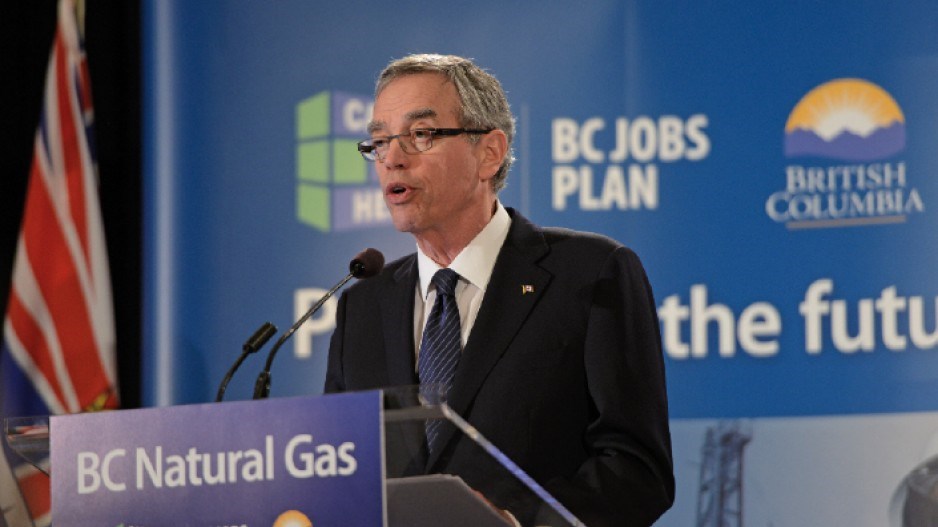As if three liquefied natural gas plants in Kitimat and two in Prince Rupert isn’t ambitious enough.
Last week the B.C. government issued a call for bids on Grassy Point – the site of a failed LNG experiment in the 1980s that serves as a cautionary tale about the uncertainty of the gas industry.
Government ads give potential developers until March 18 to submit bids, and they make it clear that the sale is solely to develop a liquefied natural gas plant. If developed, it would create a third export hub for LNG on the B.C. coast, north of Prince Rupert.
In the 1980s, Dome Petroleum Ltd. signed an agreement with the Lax Kw’alaams First Nation and NIC Resources Inc. (a Canadian subsidiary of Nissho Iwai Corp.) to build the Western LNG terminal, according to the book After Native Claims.
Had the project proceeded, B.C. might now be a leader in LNG exports rather than trying to play catch-up with Australia, which is already the world’s fourth-largest LNG exporter.
At a two-day conference on LNG hosted by the province last week, oil and gas executives explained why they thought B.C. could become a global player, while tempering enthusiasm with a discussion of some of the hurdles the industry faces.
In addition to proximity to Asia, abundant gas reserves and well-developed conventional gas industry, Western Canada has a comparatively richer gas feed than other countries and cool temperatures, which reduces the cost of chilling the gas to 162 degrees Celsius, according to Elizabeth Spomer, senior vice-president global business development at BG Group.
She said the temperature difference alone means LNG produced in Prince Rupert would add a 30% throughput advantage over a producer in the Gulf of Mexico.
“I think Canada’s well placed in this 2017-2022 timeframe to take a lot of market,” she said.
One of B.C.’s disadvantages is that the gas supply is so far from tidewater, which will require building hundreds of kilometres of pipeline across the Coast Mountains.
“Given the scarcity of quality sites, the tough terrain challenges for pipeline infrastructure, and savvy LNG buyers, we’re benchmarking Canadian offerings against more established supplies from places like Australia and Qatar,” said Anders Ekvall, vice-president of LNG Americas for Shell Canada Services Ltd.
Fortunately, the demand for gas and LNG is growing, especially in Asia.
“Global energy demand is expected to increase by 35% between 2010 and 2035, and Canada is well positioned to support that demand,” said federal natural resources minister Joe Oliver last week, while announcing his government’s approval of a 25-year LNG export licence for Shell Canada’s LNG Canada project in Kitimat.
“Every Asia Pacific country that I visited in the past year – China, India, Korea and the Philippines – long-term energy security was the overarching concern.”
Oliver added that if all five LNG projects proposed for B.C. go ahead, they would generate $1 trillion over 30 years.
Luo Weizhong, executive vice-president for CNOOC Gas and Power Group, told the conference last week that China’s energy demands are growing at double digits and cannot be satisfied domestically.
While China does have large reserves of shale gas, it lags in shale gas extraction know-how. China gets roughly half its gas from LNG imports; the rest comes from Russia by pipeline.
“If LNG is not able to compete against pipeline gas, its role will be marginal,” Weizhong said.
However, CNOOC clearly thinks B.C. is a potential player in the LNG market, as it finalized a $15 billion investment in Canada last week with the acquisition of Nexen Inc. (TSX: NXY), which owns gas fields in northeastern B.C.
“CNOOC already has a sizable investment in Canada, and we hope to expand and enhance our energy corporation by participating in potential LNG projects,” Weizhong said. “CNOOC is excited about the prospect of Canada becoming a significant LNG supply source.”
Province’s carrot approach to LNG infrastructure
Just two weeks after announcing plans to levy billions of dollars’ worth of new taxes and royalties on the nascent LNG sector, Premier Christy Clark last week announced a series of incentives for the industry, including $120 million worth of royalty credits for companies that build roads and pipelines as part of developing an LNG industry. Upon completion of pipelines and roads developed for LNG, firms will get back up to half of their construction costs in the form of credits that will reduce the royalties they pay on gas and LNG.
“These credits will ensure that our fiscal regime is the most competitive in the world,” Clark said.
She also announced a $32 million loan to 15 First Nations to help them participate in the Pacific Trail Limited Partnership. From that participation, First Nations will benefit from the construction of the 463-kilometre Pacific Trail pipeline, which would supply gas for the Kitimat LNG plant.
The project’s developers – Chevron Canada Ltd. (NYSE:CVX) and Apache Corp. (NYSE:APA) – formally signed a $200 million revenue sharing agreement last week with the 15 First Nations along the pipeline corridor. It provides direct financial benefits to participating First Nations and provides business and training opportunities.
Clark acknowledged Australia is B.C.’s main competition. It is close to Asian markets and is already the world’s fourth largest LNG exporter. It is also halfway through a massive new $53 billion LNG construction project.
But Australia’s LNG expansion plans have been experiencing significant cost overruns lately, due in part to skilled labour shortages – something B.C. could also face.
Clark last week announced a new workforce strategy and action plan to address skilled labour needs, scheduled to be completed in April.




